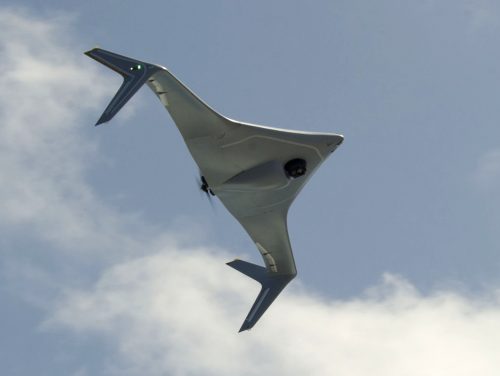Soft robotics, the study of biologically based robots, has revolutionized robotic development to make machines that mimic biological systems. These robots can scale walls with the sticky feet of a gecko, swim through water with the soft body of an octopus, and perch with the agility of insects. Soft robots pave the way for the development of innovative technologies with a variety of potential uses. The newest soft robot, published in a recent issue of Science Robotics, mimics the flight of bats.
Researchers from Caltech and the University of Illinois at Urbana-Champaign have developed a new aerial vehicle named bat bot, or B2. B2 is small robot, nearly the size of a fruit bat. With a wingspan of about a foot, it weighs almost as much as a bar of soap. The robot has flapping, jointed wings covered by a stretchable silicone membrane that allows for complex movements. The robot also has on-board sensors and computers for autonomous flight capabilities.
The development of functional bat-like wings and motion is an impressive technical feat due to the complexity of bat aerodynamics. A bat wing contains twenty joints that allow for at least forty different positions. The researchers knew that it would be difficult to mimic all of these joints. “It’s impractical or impossible, to incorporate [all 40] of these joints in the robot’s design,” said Soon-Jo Chung, the corresponding author of the study. So, the wing design had to be simplified.
The research team first identified which joints and motions were most crucial to flight and allowed for the greatest number of maneuvers. Based on this, they designed simplified wings that contain nine joints and allow for five distinct motions. While B2’s wings are much less complex than bat wings, the robotic wings are still vastly more complicated than other aerial vehicles. Aerial robots based on the flight of birds and insects often have a rigid wing design that only contains one joint to connect the wing to the robot body, similar to a shoulder. Also, aerial vehicles, like airplanes, have non-jointed fixed wings that require additional thrust for flight.
The researchers demonstrated that the increased wing complexity allows B2 to perform agile flying maneuvers similar to bats. These include straight flight, banking turns, and sharp diving maneuvers necessary for catching insects. Some aerial robots can perform similar flight patterns, but they require the use of many rotating propellers. B2 is a quieter and more compact option. Additionally, B2’s flexibility and lightweight design make it a safer vehicle for use in busy environments. These advancements make B2 better than current technology for uses in cities around human populations.
The authors envision B2-like robots replacing other drone technology and performing functions like scouting difficult terrains, assisting construction workers, or providing courier services. While implementation lies in the distant future, the development of B2 is an important step towards understanding the flight of bats and the development of new flight technologies.

